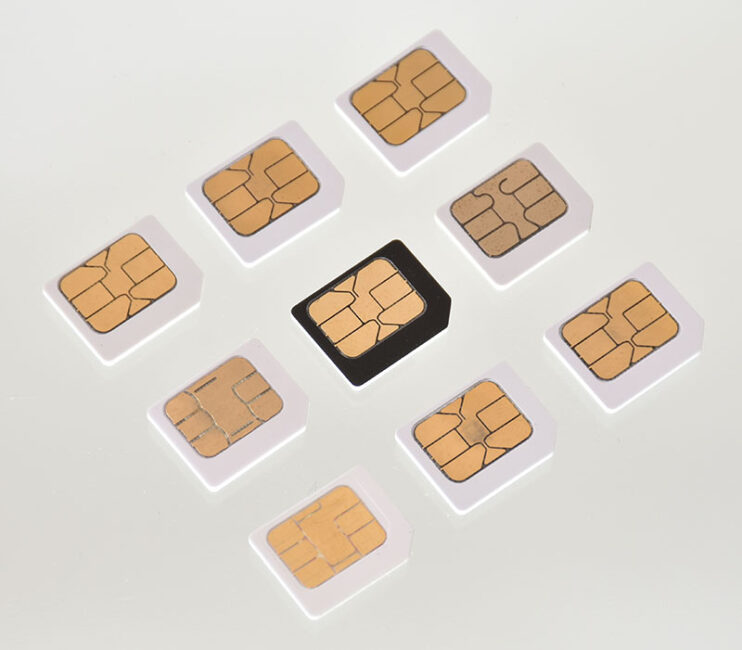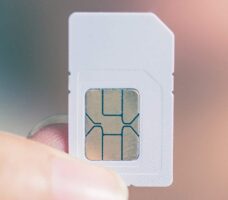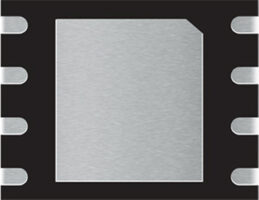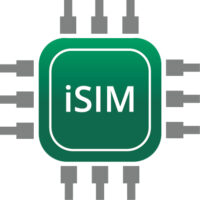SIM Card Types and Form Factors Explained
By Eyal Yasmin
August 11, 2023
There are various SIM card form factors to choose from when designing an IoT-connected device. Each form factor has unique benefits and drawbacks.

SIM types can be segmented as follows:
The original SIM is a removable card created first for consumer mobile phones. Later, it found a home with machine-to-machine use cases. There are four generations (or five, as some will include eSIM) of physical SIM card form factors:
Over time, SIM form factors needed to fit smaller applications, so SIM card sizes were reduced. However, between generations 2FF and 4FF, the chips themselves never shrank, only the surrounding card. While 1FF is no longer in use, the others are still leveraged today.
Also known as machine-to-machine form factor (MFF2), an eSIM is a dedicated chip soldered to a device’s circuit board. It can send SIM profiles to other devices more effectively.
The latest types of this SIM include:
Traditional SIM cards are considered commercial, and eSIMs are considered industrial. As an industrial SIM type, eSIMs can support an operating temperature range of -40° C to +105° C.
This newest type modernizes an eSIM’s functionality by porting it into a system-on-a-chip architecture, which removes the need for dedicated hardware.
IoT managers need to consider the strengths and weaknesses of each form factor. These considerations include the use case and device size to choose the most suitable type.

Standard SIMs’ greatest strengths are their universality and convenience. Switching between mobile carriers is easy — remove the old SIM from the device and insert the new one.
However, bad actors can remove, steal or tamper with these SIM cards. For large-scale device deployments, it is almost impossible to physically replace every SIM card after switching carriers.

The embedded Universal Integrated Circuit Card (eUICC) technology makes an eSIM more multipurpose and enables remote provisioning. Moreover, eSIMs have longer life cycles and can endure harsh conditions like vibration, dust, and extreme heat or cold.
However, unlike a traditional SIM, an eSIM is not removable.

iSIM is the most cost-effective and energy- and data-efficient form factor. Moreover, it has the smallest footprint and saves significant space in hardware design.
Despite these innovations, there must be standardization before the iSIM field of deployment can mature. There are also security concerns with iSIM as these devices are not certified with current SIM accreditations.
The new iSIMs on the market are fully compliant and part of the chipset vendors’ manufacture.
The 2FF SIM card form factor is best for larger devices like ATMs and vending machines. 3FF is ideal for medium-sized IoT devices like tablets. The smallness of the 4FF form factor makes it perfect for wearable technology.
The eSIM form factor is most well-known in the connected car industry. Likewise, the resilience and security of eSIM make it ideal for IoT devices in verticals, such as:
iSIM will likely empower many IoT devices, from gas meters and medical equipment to smartwatches and virtual reality headsets.
Our IoT NExT™ connectivity services help rapidly scale deployments spanning different mobile networks. NExT is a pioneer embedded connectivity solution. It is a cellular LPWA SIM-embedded module that empowers you with remote provisioning and eliminates truck rolls. Our new IoT SIM generations also include the newest iSIM chipset solution on the market.
Telit Cinterion modules support the new eSIM generation in which the USON-8 and MFF-XS are embedded in those modules.
NExT SIM provisioning enables future-proof global IoT connectivity and secure, remote profile switching. Whatever your cellular connectivity needs are, Telit Cinterion has something for you. Speak with our connectivity experts and request an IoT connectivity starter kit.